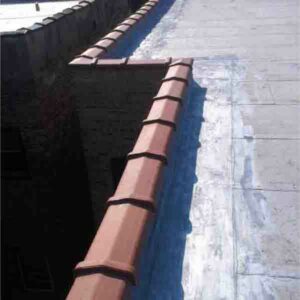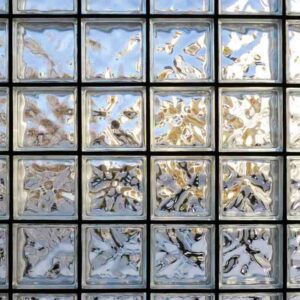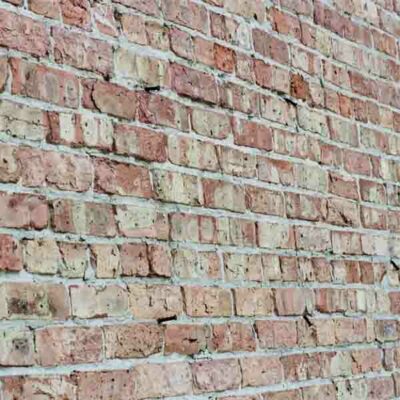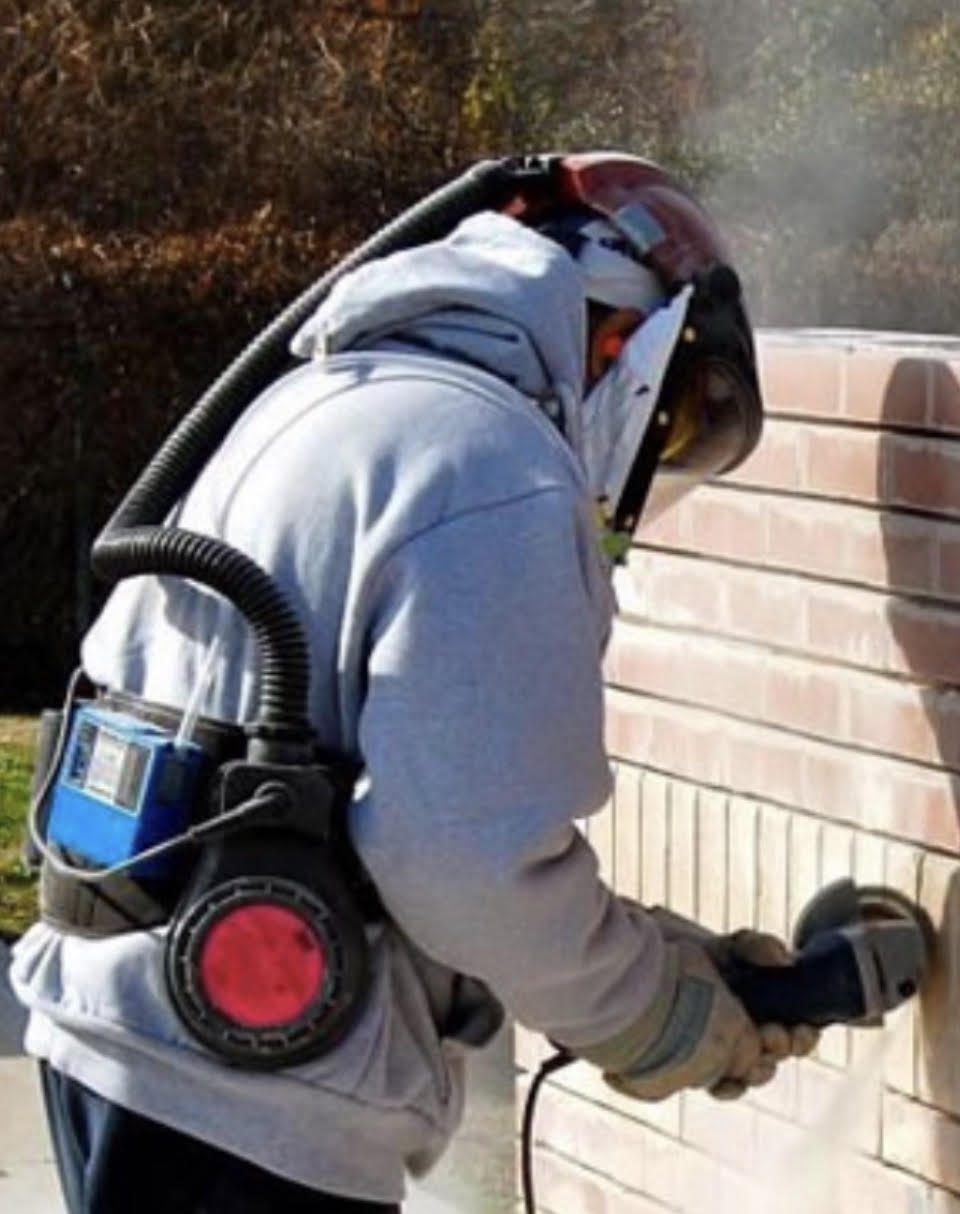What Is Tuckpointing
Tuckpointing is the process of removing deteriorated mortar from between masonry units (clay bricks, stones, Renaissance® masonry units, or concrete blocks) and replacing it with fresh mortar.
Why Tuckpointing Is Necessary
Weakened mortar (also called failed mortar) can:
- Spoil the appearance of your residential or commercial building, decreasing its value.
- Lead to structural problems, making your building unsafe.
- Trigger drafts and temperature loss, increasing your energy costs.
- Lead to leaks, especially around window frames (copings), doors (lintels), or chimneys that need repair, causing water damage.
- Allow seepage between your walls (especially if the construction was faulty), which can harbor dangerous bacteria or mold.
- Pose a safety hazard when bricks loosen their hold and fall to the ground.
How to know if your home or building needs tuckpointing
Problems With Mortar Joints
With weather and age, you might notice the deterioration of your mortar, also called “failed” mortar joints. These might include:
- Cracked, broken, or missing mortar.
- Mortar that is protruding from the wall.
- Splintering or crumbling mortar (i.e., raking your fingers across the joints causes the mortar to chip or split into fragments, also known as spall or spalling).
- Loose mortar or bricks.
- Mortar joints that are misaligned.
- Curving brick walls.
Leaks or Water Damage
If you miss subtle mortar joint changes, your first sign of a problem may be leaks in your walls, basement seepage, puddles, or a musty smell.
Factors that may cause mortar failure
Many factors can wreak havoc on your mortar joints. These include changes in weather, advancing age, and the quality of the materials or masonry work itself.
The Impact of Chicago Weather on Bricks and Mortar
Brick houses may have withstood the perils of the Big Bad Wolf. But let’s face it, Chicago weather can be crueler.
Chicago Temperatures Shifts
The brick itself can last for decades. But the brutal subzero winters cause the mortar between your limestone or clay bricks (mortar joints) to contract. And the same mortar joints expand in the broiling summer heat. What’s worse, these fluctuations can occur on the same day. Freeze-thaw cycles are one of the most ruthless assaults on your mortar joints.
Chicago Wind Gusts
Wind gusts can compound the effects of extreme temperatures. For example, wind can whip off Lake Michigan or across flat Illinois farmland with speeds of 50 mph or more. Additionally, the wind can plunge “feels-like” temperatures, or “wind chills,” to below zero degrees.
Rain and Snow in the Midwest
Furthermore, precipitation can be extreme. For example, the Chicago Area has seen summers with 51 inches of rain (2008) and winters with nearly 81 inches of snow (1978-1979).
Rainwater and melting snow can seep into cracks in mortar joints and masonry units. The tiniest cracks can act like straws, sucking water into porous concrete bricks without allowing airflow. It can even defy gravity. This is called the capillary effect. Learn more about concrete brick repair.
Aging Mortar
Typically, new brick mortar joints can last 10 to 20 years.
But with time and extreme weather conditions, the mortar joints of Chicago’s historic bungalows, majestic brick mansions, two-flats, apartments, commercial offices, and other well-constructed buildings eventually fail.
Poor Workmanship
Another cause of mortar failure is poor-quality work. Incomplete mortar applications or spreading mortar during suboptimal weather conditions can cause speed mortar deterioration.
Furthermore, mortar can be too wet or too dry to bond properly. And extreme temperatures can change the mortar’s tensile strength, i.e., its ability to resist breaking.
Substandard or Inappropriate Materials
Inexperienced builders or DIY “masons:.”
- May not choose the best masonry units for the job.
- Apply the wrong type of mortar.
- Choose a waterproofing agent when one isn’t warranted.
- Neglect to apply a sealant when one is needed.
Other Areas That May Require Tuckpointing
Besides exterior walls, the following may require tuckpointing:
- Chimneys
- Parapet walls, aka curtain walls, that extend above the roof’s edge.
- Concrete blocks and split blocks
- Glass masonry blocks


Importance of a Masonry Home Inspection
If you own a brick (or limestone) building, it’s essential to have a professional mason inspect your home regularly.
A masonry contractor, such as Gralak Masonry Contractor, can inspect your building to determine if you need a tuckpointing touch-up or a major: masonry overhaul. For example, you may require a chimney repair or replacement. Again, we recommend an inspection of your masonry every three to five years.
Protecting Your Brick or Stone Masonry
If brick or stonework is improperly maintained, each mortar joint and masonry unit can serve as a water entry point. Replacing deteriorated bricks and stones, tuckpointing, and re-caulking are cost-effective methods to thwart the need for major, more costly repairs.
What Else You Should Know About Tuckpointing
Gralak Masonry Contractors will take every step to ensure the success of your tuckpointing.
Gralak Personal Consultations
You won’t meet with a random salesperson or an assistant when you schedule your appointment. Instead, Company Owner Radoslaw Gralak (pronounced RAD-a-slov GRAY-lak) will meet with you at your home or building(s). Radoslaw will personally inspect your exterior brick walls, brick chimney(s), [link] or around your windows to identify the source of your problems and potential safety hazards.
Then, he’ll:
- Recommend the tuckpointing or other masonry services your building needs.
- Identify the time and resources needed to complete the work.
- Explain that ambient temperatures may affect your scheduling and timeline.
- Discuss the time needed to start and finish the project.
- Consult with you every step of the way so that you can make informed decisions for your home or other building property.
Skillful Tuckpointing and Other Masonry Services
We’ll postpone a job if the wall temperature dips below 40 degrees or above 95 degrees Fahrenheit. At these temperatures, mortar won’t be at the proper consistency.
At optimal temperatures, we will only keep mortar for two hours; this ensures your mortar remains pliable.
Permits
The city of Chicago building code requires a permit to ensure the project meets minimum standards. These standards are intended to protect the integrity of the buildings.
Chicago’s Easy Permit Process Program is streamlined for small, simple home and building improvement projects.
Depending on your project and location, many different types of permits may be required. We can often pull the necessary permits. However, some municipalities require the property owner to apply for specific permits.
If scaffolding is necessary and the Chicago Department of Transportation has approved the work, an Easy Permit can be obtained the same day.
Gralak Tuckpointing and the Gralak Difference
Choose the Gralak Difference for your building’s tuckpointing. You’ll hire a masonry contractor who:
Learn more about Gralak Masonry Contractor.
How Much Does Tuckpointing Cost?
We estimate our tuckpointing projects by calculating time and material.
Most of the cost involved with tuckpointing projects will be labor. This time may include preparation of the masonry walls and setting up scaffolding.
If the project location is in an obstructed area or is difficult to access, more time, labor, and equipment will be required.
Once we initiate a tuckpointing project, additional costs are sometimes incurred. For example, other brickwork might be necessary. This might include:- Brick repair or replacement
- Masonry restoration (returning a wall or structure to its former appearance)
- Power washing and cleaning,
- Applying water repellent or waterproofing
All our Chicago and suburban tuckpointing projects are completed with the highest quality and experience—promptly at a reasonable price.
Do You Have Chicago Common Bricks?
In 1871, the Great Chicago Fire blazed through and leveled the almost entirely wood-built structures of the city. As a result, Chicago mandated stricter building codes that all but required brick.
 Chicago brickmakers needed access to clay and shale to make and fire bricks. Fortunately, “blue clay” was plentiful in the Chicago River and the banks of Lake Michigan. These clay deposits furnished almost all the clay needed to rebuild the city.
Chicago brickmakers needed access to clay and shale to make and fire bricks. Fortunately, “blue clay” was plentiful in the Chicago River and the banks of Lake Michigan. These clay deposits furnished almost all the clay needed to rebuild the city.
Therefore, in the late nineteenth and early twentieth century, Chicago was rebuilt almost entirely from Chicago itself! Today these famous clay bricks are called Chicago Common Brick. When fired, the blue clay becomes deep red, pink, salmon, or buff yellow, interrupted by random combinations of gold, yellow, or black.
Additionally, these bricks are high in lime, iron, gravel, and glacial debris, so they are typically rough and uneven. Because of this, you often see these types of bricks on the sides and back of buildings.
As a result of a century of Chicago brickmaking, this type of brick is found throughout the city of Chicago and in many of its suburbs. At Gralak Masonry Contractor, we have provided masonry services to these communities built with tons of Chicago Common brick:
- Chicago
- Edison Park
- Evanston
- Oak Park
- Park Ridge
- Skokie
See the areas we serve.
If your brick building was erected before the mid-1990s, it was likely built of solid clay bricks. However, if your home or building was built in the mid-1990s or later, you may have construction made of concrete bricks. Learn more about concrete block repair.
The last Chicago Common brickmaker closed in 1981—110 years after the Great Chicago Fire.
Reclaimed Chicago Common Brick
Recently, reclaimed common brick has also become popular. These bricks tend to be weathered or sandblasted. Therefore, these reclaimed clay bricks have a smoother surface. Consequently, they behave more like concrete bricks and may require seal coating.
We stand behind the quality of our craft. To that end, we offer the Gralak Guarantee.


